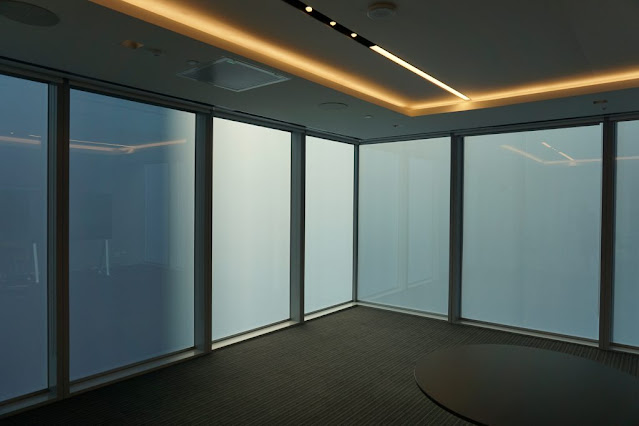 |
| Electrochromic Glass |
Electrochromic glass is a type of smart glass or switchable glass that can change its transparency when an electric current is applied. Unlike traditional glasses, electrochromic glass can darken or lighten exposure to light and heat passing through the glass electronically without having to open blinds or curtains. This is achieved through thin metal oxide or polymer coatings on the glass that change color and opacity when a small voltage is applied.
How Does Electrochromic Glass Work?
Electrochromic glass works on the principle of the electrochromic effect. It contains at least two thin films of electrochromic materials - usually tungsten or nickel oxide - separated by an ion-conducting layer. When a low-voltage electric current runs through the glass, chemical reactions occur in the electrochromic layers which change their oxidation state. This causes the glass to darken by allowing more light to pass through or blocking outside light depending on the direction of the electric current. The glass remains in the darkened or lightened state even after the power is turned off as the new oxidation state is maintained. Reversing the polarity switches the glass back.
Advantages of Electrochromic Glass
There are several benefits of using Electrochromic Glass compared to traditional glasses:
Control of Sunlight and Heat - Electrochromic glass allows electronic control over the amount of sunlight and heat entering a building. It can automatically adjust to maintain desired indoor lighting and temperature levels. This provides improved occupant comfort and energy savings on cooling and heating.
Privacy On Demand - The glass can quickly switch between transparent to opaque states for privacy when needed without having to close blinds or curtains. This is useful in homes, offices and other spaces.
Reduced Glare - The darkened state significantly reduces annoying glare from the sun on digital devices and computer screens. This improves visibility and reduces eye strain.
Safety Benefits - Rapid switching abilities of electrochromic glass provide better protection from external threats. During emergencies, the glass can instantly block visibility and projectiles. It is also used in architectural applications like smart windows.
Energy Efficiency - By controlling solar heat gain, electrochromic glass helps lower energy consumption for air conditioning. Studies show it can reduce cooling costs in buildings by around 15-30%.
Applications of Electrochromic Glass
Some major applications where electrochromic glass is being used include:
Architecture - As smart windows in homes and commercial buildings for climate control, daylight harvesting and energy savings. Popular for south, west and east facing windows.
Automotive - Side mirrors, rear-view mirrors and sunroofs of high-end vehicles use electrochromic glass for anti-glare and improved visibility.
Aircraft - Windows on planes employ electrochromic glass to combat glare and bright sunlight during take-off and landing.
Eyewear - Transitions lenses in prescription glasses and sunglasses automatically darken in sunlight for clear, glare-free vision.
Display Devices - Touch screens of smartphones, tablets, laptops and other electronics incorporate electrochromic displays for glare control.
Types of Electrochromic Glass
There are a few main types of electrochromic glass based on the electrochromic materials used:
- WO3 based EC glass uses tungsten oxide as the electrochromic layer. It is the most widely used type due to good optical properties and fast switching speeds. However, its limited color range is a drawback.
- NiO based EC glass uses nickel oxide and has a wider color tunability ranging from dark gray to greenish blue tones. But it has slower switching times.
- Polymer based EC glass contains electro-active conducting polymers like viologen instead of metal oxides. It offers flexibility in design and transparency control with low power needs.
- Hybrid EC glass combines metal oxides with polymers to leverage benefits of both systems like improved color, switching times and stability.
Future Outlook and Challenges
Electrochromic glass technology is progressing rapidly and finding increased usage in architectural and automotive applications. Manufacturers are developing larger glass sizes, faster switching speeds below 3 seconds and better color choices. The electrochromic glass market is projected to grow substantially in the coming years. However, further improvements are still needed in areas like durability, production costs and commercialization challenges. Overcoming these hurdles will determine how soon electrochromic glass becomes the dominant smart window technology of the future.
Get More Insights On This Topic: Electrochromic
Glass
Tags
Consumer Goods
